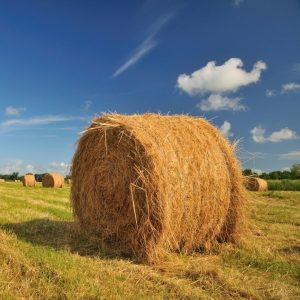 5 Essential Tips for Harvesting High-Quality Hay: Harvesting hay is crucial for the upkeep of livestock. Your hay harvest can make or break your winter feed supply. To ensure a quality harvest, there are several things you need to consider. We have several tips to help your harvest this year.
5 Essential Tips for Harvesting High-Quality Hay: Harvesting hay is crucial for the upkeep of livestock. Your hay harvest can make or break your winter feed supply. To ensure a quality harvest, there are several things you need to consider. We have several tips to help your harvest this year.
Timing is Everything
The timing of your hay harvest will determine the quality and quantity of your hay. Cut your hay when it’s at the right stage of growth. The best time to cut hay is just before it fully blooms. This usually happens in late May or early June, depending on your location. At this stage, the hay is high in nutrient content and has a good balance of protein and fiber.
Keep an Eye on the Weather
Timing is important, but so is the weather. You should only cut hay when the weather is dry and sunny. It takes about three days of good weather to dry hay down to the correct moisture content for storage. Cutting wet hay will cause it to spoil and develop mold, which will make it inedible and potentially harmful to your livestock.
Mow and Flatten the Hay
Once the hay is adequately dried down, it’s time to mow and flatten it. Use a mower-conditioner, which will cut and crush the hay to make it dry more quickly. After mowing, flatten the hay with a hay rake or tedder. Flattening the hay will help it dry more efficiently and make it easier to bale.
Invest in Good Quality Equipment
To ensure a successful harvest, it’s crucial to have the right equipment. Good quality mowers, baling machines, and tractors will make your job easier and produce higher quality hay. Before buying equipment, do your research and read reviews to find out what brands and models are the best for your specific needs.
Store Your Hay Properly
Proper hay storage is essential to maintaining its quality. Store your hay in a dry, well-ventilated barn or shed. If you’re storing your hay outside, make sure it’s covered with a waterproof tarp to protect it from rain or snow. Store your hay in small, manageable bales to prevent spoiling. Large bales can develop spoilage in the center, making them unusable.
Harvesting hay doesn’t have to be a daunting task. By following our tips, you can ensure a harvest of high-quality hay that will keep your livestock healthy and fed all winter long. Remember to pay attention to the timing, weather, equipment, and storage of your hay. With a little bit of preparation and effort, you can have a successful harvest year after year.
In conclusion, Lochte is pleased to provide quality hay and shavings to our community.
